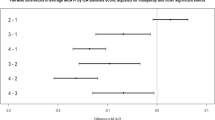Abstract
The occurence of microembolic signals (MES) in patients with transient ischemic attack (TIA) or stroke has already been described; the influence of the time interval between onset of symptoms and transcranial Doppler monitoring (TCD) on the MES rate or MES prevalence and the possible prognostic value of the early detected MES rate on the outcome of TIA or stroke symptoms in a 3 month interval are discussed. In a prospective study we evaluated 61 patients consecutively admitted to our stroke unit after their first ischemic neurological deficit involving the vascular territory of MCA and/or ACA. All of the patients underwent a 30-minute bilateral transcranial Doppler monitoring of their MCAs for the identification of MES. Monitoring was performed within 12.3 + –9.3 (average mean + –SD) hours of stroke onset for the first time, the second time 48 hours after first TCD monitoring. Prognosis for the recovery of neurological deficits was evaluated by using the Barthel index (BI) and Scandinavian Stroke Scale (SSS) at the time of admission of the patient to the stroke unit, and with Barthel indices after one month and after 3 months. As a result, 56% of all patients showed MES in at least one of the two registrations. MES were recorded not only on the symptomatic side. The MES prevalence between both TCD monitorings was significantly different (total MES prevalence: 1st TCD: 26 patients; 2nd TCD: 13 patients; p < 0.04; ipsilateral MES prevalence: 1st TCD: 19 patients; 2nd TCD: ¶9 patients; p < 0.01). The regression analysis showed a significant influence of the total MES rate on both neurological scores at admission (SSS: 0.03; Barthel index: 0.04), but not for the Barthel scores after one and three months. In conclusion, we found an influence of the time interval between onset of neurological symptoms of TIA or stroke on the MES rate and the prevalence of MES. The prevalence of MES or the MES rate, found after a short time interval to the onset of symptoms, did not have a prognostic value on the outcome of neurological deficits up to a three month follow-up.
Similar content being viewed by others
Author information
Authors and Affiliations
Additional information
Received: 1 September 1998 / Accepted: 13 October 1999
Rights and permissions
About this article
Cite this article
Delcker, A., Schnell, A. & Wilhelm, H. Microembolic signals and clinical outcome in patients with acute stroke – a prospective study. European Archives of Psychiatry and Clinical Neurosciences 250, 1–5 (2000). https://doi.org/10.1007/PL00007532
Issue Date:
DOI: https://doi.org/10.1007/PL00007532




